|
Described below are some of the products (including flour) created directly from corn. Other than a few exceptions, products that are created after the grain has been ground into flour are not described, because they are so numerous.
|
Corn FlourSeveral varieties of corn are used to produce different types of corn flour. The degree in which the corn is milled and processed also determines the type of flour that is produced. Blue cornmeal, atole flour, harinilla, cornmeal, and masa harina are among the different types of corn flour that are commonly used by consumers.
|
CornmealCornmeal is a flour-like substance that is composed of larger granules than regular flour. It is produced from grinding dried kernels of yellow or blue corn. Yellow or blue cornmeal can also be ground to a finer consistency and sold as gluten-free flour, which can be used to make cornbread, muffins, pancakes, polenta, and tortillas. Cornmeal is very useful for gluten-free quick breads. Baked goods have a course, gritty texture with a granular crumb and the flavor of sweet corn. Freshly ground cornmeal is best if it has been stone ground, because it has more flavor than cornmeal that has been ground using other methods. Because cornmeal contains no gluten, it must be blended with wheat flour in order to form a bread loaf with any capability to rise.
|
CornstarchCornstarch is obtained from the white heart of the corn kernel. It is a tasteless, very fine powder that is very useful as a thickener, having double the thickening properties of regular flour. It is widely used for thickening sauces, gravies, and puddings. It is best to stir it into water first before it is added to other foods so that it can be more easily incorporated without creating lumps. It can also be used in addition to, or as a substitute for, cake flour in any recipe calling for cake flour.
|
Hominy
Hominy is a corn product that is created by soaking white or yellow corn kernels in scalding water mixed with a chemical solution, such as a mild lye or slaked lime. The soaking forces the kernel to expand so the hull and germ split. This allows the kernel to be easily removed so that the remaining corn substance can be dried. After it has been dried, the whole kernels are soaked in water and a solution mixed with limestone or wood ash to expand the kernels, which are then boiled, creating a soft puffy food product.
Whole hominy can be boiled or fried and served as a side dish with or without additional ingredients (meat, vegetables, or other foods). It can be formed into cakes or served as a filler in soups, stews, and salads.
Hominy grits are another form of hominy, produced by grinding the dried and processed corn kernels several times, resulting in a finer grained substance that is sold as fine, medium, or coarsely textured hominy. Grits are often combined with milk and water and traditionally served in the southern U. S. as a pudding, as a side dish, or cut into squares and fried. Masa harina is another hominy product that is a semi-fine ground meal that is formed into flat breads, such as tortillas.
Dried hominy that can be reconstituted and cooked, known also as "pozole" or "posole," is becoming popular as a food product primarily because of the intensity of the flavor it offers, which cannot be replicated with hominy that has been canned. The dried hominy is washed and then soaked overnight, similar to preparing beans. When the hominy is ready to be cooked, it is drained and placed in a saucepan with several inches of boiling water. The hominy is allowed to simmer for and hour or more and is stirred occasionally until tender. If the hominy is to be kept for several days, some of the water can be drained off, leaving a little to keep it moist and soft.
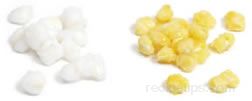
White Hominy and Golden Hominy
|
Baby CornBaby corn is an immature ear of corn, usually less than 3 inches in length. It is harvested after 40 to 45 days of growth. It is usually canned in water or a pickling solution and is meant to be eaten whole. It is commonly used as a garnish, an addition to salads, an hors d'oeuvre, or as an ingredient in side dishes. Baby corn may also be referred to as cocktail corn.
|
Popcorn
Popcorn is a special variety of dried corn that pops open when heated, producing puffs of corn that are eaten as a snack. About 14% of the composition of the kernel is water, which creates steam when the kernel is heated. This causes the popcorn kernels to explode and pop open because the steam cannot escape. Popcorn is very nutritious when eaten plain but much less so when butter, excess salt, and other toppings are added to provide extra flavor.
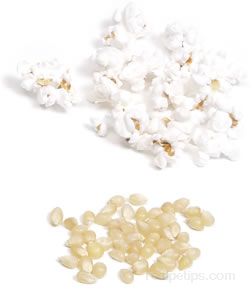 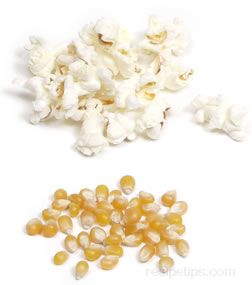
White Popcorn and Yellow Popcorn
|
Corn Chips
Corn chips are a snack food made from corn and flour that are shaped then baked or deep-fat fried to create a crispy chip, similar to a potato chip. Corn chips are produced in a variety of flavors, colors, and textures. Fried corn chips generally contain more calories and fat than baked versions, which are becoming increasingly popular. Other low-fat and low-sodium versions are also popular, because of the increasing interest in healthy eating. Corn chips are generally eaten as a snack with salsa or melted cheese, or as an accompaniment for sandwiches, soups, and stews.
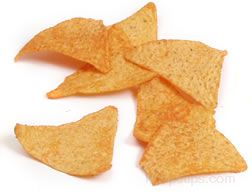 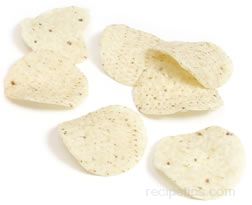
|
Corn PastaCorn pasta is produced from corn flour and is a type of pasta that is wheat and gluten free, which is beneficial for consumers who are wheat and gluten intolerant. Corn pasta has a bright yellow color and provides a flavorful corn taste, but the texture is slightly grainier than pasta made from wheat flour. Several shapes of corn pasta are available, including spaghetti, elbow macaroni, and rotelli.
|
Corn OilCorn oil is extracted from the germ of the corn kernel. Refined corn oil is one of the best oils for frying, because it has a high smoke point. It has a light golden color and is almost tasteless and odorless, so it's a good choice for baking. It's widely used as a salad oil, and it's also the main ingredient in the production of margarine. Corn oil is high in polyunsaturated fat and monounsaturated fat, so it's healthier to use than oils with higher levels of saturated fat.
|
Corn Syrup
Corn syrup is a food sweetener processed from cornstarch. It is very sweet and the consistency is thick and sticky. It is commercially produced in both light and dark varieties. Light corn syrup is clarified, which gives it a clear appearance. Dark corn syrup is flavored with caramel, which gives it a sweeter taste and a deeper color. Both light and dark corn syrups are commonly used for preparing numerous candies and desserts.
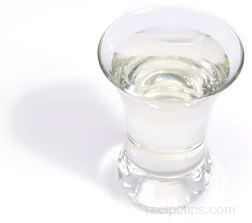 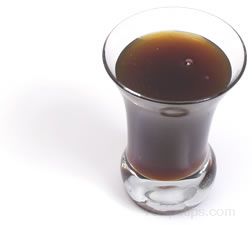
Light Corn Syrup and Dark Corn Syrup
|
Decorative CornDecorative corn (flint corn) consists of colorful arrays of hard kernels that are grown mainly for their decorative appeal. The decorative ears are often referred to as "Indian corn" and contain kernels of vibrant colors ranging from yellow, orange, and red to blue, purple, and black. Decorative corn is often used for seasonal displays during the months following the harvesting of corn crops, and it's also ground into meal for use as a food product.
|
Other Corn Products
Other edible products made from corn include cereals; other snacks made from corn, such as corn nuts and roasted sweet corn kernels; and beverages, including soft drinks and alcoholic drinks.
 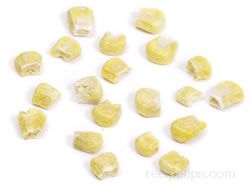
Corn Nuts and Roasted Sweet Corn Kernels | |

